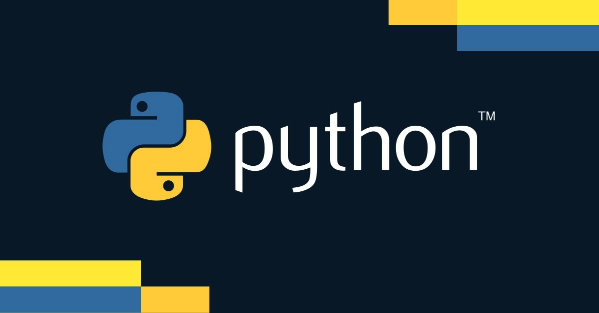Metaflow异常检测工作流详解
时间:2025-08-03 08:57:47 255浏览 收藏
小伙伴们对文章编程感兴趣吗?是否正在学习相关知识点?如果是,那么本文《Metaflow编排异常检测工作流全攻略》,就很适合你,本篇文章讲解的知识点主要包括。在之后的文章中也会多多分享相关知识点,希望对大家的知识积累有所帮助!

使用Metaflow编排复杂异常检测工作流,关键在于其提供的DAG(有向无环图)表达能力、版本控制、以及与各种计算资源的集成。Metaflow允许你将整个异常检测流程分解为独立的步骤,每个步骤可以执行特定的任务,例如数据预处理、特征工程、模型训练、异常评分等。通过Metaflow,你可以定义这些步骤之间的依赖关系,从而构建一个完整的、可重复执行的工作流。

解决方案
首先,你需要将你的异常检测逻辑分解为独立的Metaflow步骤(step)。每个步骤都应该负责一个明确的任务,并且易于测试和调试。例如,一个典型的异常检测工作流可能包含以下步骤:

start: 工作流的起始步骤。load_data: 从数据源加载原始数据。preprocess_data: 清洗和预处理数据,例如处理缺失值、标准化数据等。feature_engineering: 提取用于异常检测的特征。train_model: 使用训练数据训练异常检测模型(例如,Isolation Forest, One-Class SVM)。score_data: 使用训练好的模型对新的数据进行评分。evaluate_model: 评估模型性能,例如计算precision, recall等指标。detect_anomalies: 根据评分结果检测异常。end: 工作流的结束步骤。
在Metaflow中,你可以使用@step装饰器来定义每个步骤,并使用self对象在步骤之间传递数据。
from metaflow import FlowSpec, step, Parameter, current, trigger, card, Run
import pandas as pd
from sklearn.ensemble import IsolationForest
class AnomalyDetectionFlow(FlowSpec):
@step
def start(self):
"""
This is the 'start' step. All flows must have a step named 'start'.
"""
self.next(self.load_data)
@step
def load_data(self):
"""
Load the data. Replace with your actual data loading logic.
"""
# Replace with your actual data loading
self.data = pd.DataFrame({'col1': [1, 2, 3, 100, 5, 6], 'col2': [7, 8, 9, 10, 11, 100]})
self.next(self.preprocess_data)
@step
def preprocess_data(self):
"""
Preprocess the data.
"""
# Simple preprocessing - remove rows with any NaN values
self.data = self.data.dropna()
self.next(self.feature_engineering)
@step
def feature_engineering(self):
"""
Extract features for anomaly detection.
"""
# In a real scenario, you would extract meaningful features here.
# For simplicity, we'll just use the original columns.
self.features = self.data[['col1', 'col2']]
self.next(self.train_model)
@step
def train_model(self):
"""
Train an anomaly detection model.
"""
# Train an Isolation Forest model
self.model = IsolationForest(n_estimators=100, random_state=42)
self.model.fit(self.features)
self.next(self.score_data)
@step
def score_data(self):
"""
Score new data using the trained model.
"""
# Generate some new data to score
new_data = pd.DataFrame({'col1': [7, 8, 101], 'col2': [12, 13, 102]})
self.scores = self.model.decision_function(new_data)
self.next(self.detect_anomalies)
@step
def detect_anomalies(self):
"""
Detect anomalies based on the scores.
"""
# Define a threshold for anomaly detection
threshold = -0.5 # Adjust as needed
self.anomalies = self.scores < threshold
self.next(self.end)
@step
def end(self):
"""
This is the 'end' step. All flows must have an end step.
"""
print("Anomaly detection flow finished!")
print("Anomaly Scores:", self.scores)
print("Anomalies Detected:", self.anomalies)
if __name__ == '__main__':
AnomalyDetectionFlow()其次,利用Metaflow的版本控制功能。Metaflow会自动跟踪每次运行的代码和数据,因此你可以轻松地回溯到之前的版本,或者比较不同版本的性能。这对于调试和优化异常检测工作流非常有用。

最后,考虑异常处理。在实际应用中,异常检测工作流可能会遇到各种错误,例如数据质量问题、模型训练失败等。使用try-except块处理这些异常,并使用Metaflow的日志记录功能记录错误信息。
如何监控Metaflow工作流的性能和状态?
Metaflow提供了多种监控工作流性能和状态的方式。你可以使用Metaflow UI来查看工作流的运行历史、步骤的执行时间、以及每个步骤的输入输出数据。此外,Metaflow还支持与各种监控工具集成,例如Prometheus, Grafana等。通过这些工具,你可以实时监控工作流的资源使用情况、错误率等指标,并设置告警规则,以便及时发现和解决问题。
如何使用Metaflow进行A/B测试?
Metaflow支持A/B测试,允许你比较不同版本的异常检测模型或工作流配置。你可以使用Metaflow的Parameter特性定义可配置的参数,例如模型类型、特征选择方法等。然后,你可以运行多个版本的工作流,每个版本使用不同的参数配置。Metaflow会自动记录每个版本的性能指标,例如precision, recall等,以便你比较不同版本的优劣。
如何扩展Metaflow以支持自定义的异常检测算法?
Metaflow具有高度的可扩展性,允许你集成自定义的异常检测算法。你可以将你的算法封装成一个Python函数或类,然后在Metaflow步骤中调用它。此外,你还可以使用Metaflow的conda装饰器来管理依赖项,确保你的算法可以在不同的环境中运行。对于需要GPU加速的算法,你可以使用Metaflow的resources装饰器来指定GPU资源。
好了,本文到此结束,带大家了解了《Metaflow异常检测工作流详解》,希望本文对你有所帮助!关注golang学习网公众号,给大家分享更多文章知识!
-
501 收藏
-
501 收藏
-
501 收藏
-
501 收藏
-
501 收藏
-
142 收藏
-
259 收藏
-
113 收藏
-
327 收藏
-
358 收藏
-
340 收藏
-
365 收藏
-
391 收藏
-
392 收藏
-
105 收藏
-
442 收藏
-
291 收藏
-

- 前端进阶之JavaScript设计模式
- 设计模式是开发人员在软件开发过程中面临一般问题时的解决方案,代表了最佳的实践。本课程的主打内容包括JS常见设计模式以及具体应用场景,打造一站式知识长龙服务,适合有JS基础的同学学习。
- 立即学习 543次学习
-

- GO语言核心编程课程
- 本课程采用真实案例,全面具体可落地,从理论到实践,一步一步将GO核心编程技术、编程思想、底层实现融会贯通,使学习者贴近时代脉搏,做IT互联网时代的弄潮儿。
- 立即学习 516次学习
-

- 简单聊聊mysql8与网络通信
- 如有问题加微信:Le-studyg;在课程中,我们将首先介绍MySQL8的新特性,包括性能优化、安全增强、新数据类型等,帮助学生快速熟悉MySQL8的最新功能。接着,我们将深入解析MySQL的网络通信机制,包括协议、连接管理、数据传输等,让
- 立即学习 500次学习
-

- JavaScript正则表达式基础与实战
- 在任何一门编程语言中,正则表达式,都是一项重要的知识,它提供了高效的字符串匹配与捕获机制,可以极大的简化程序设计。
- 立即学习 487次学习
-

- 从零制作响应式网站—Grid布局
- 本系列教程将展示从零制作一个假想的网络科技公司官网,分为导航,轮播,关于我们,成功案例,服务流程,团队介绍,数据部分,公司动态,底部信息等内容区块。网站整体采用CSSGrid布局,支持响应式,有流畅过渡和展现动画。
- 立即学习 485次学习
